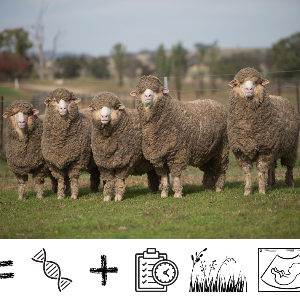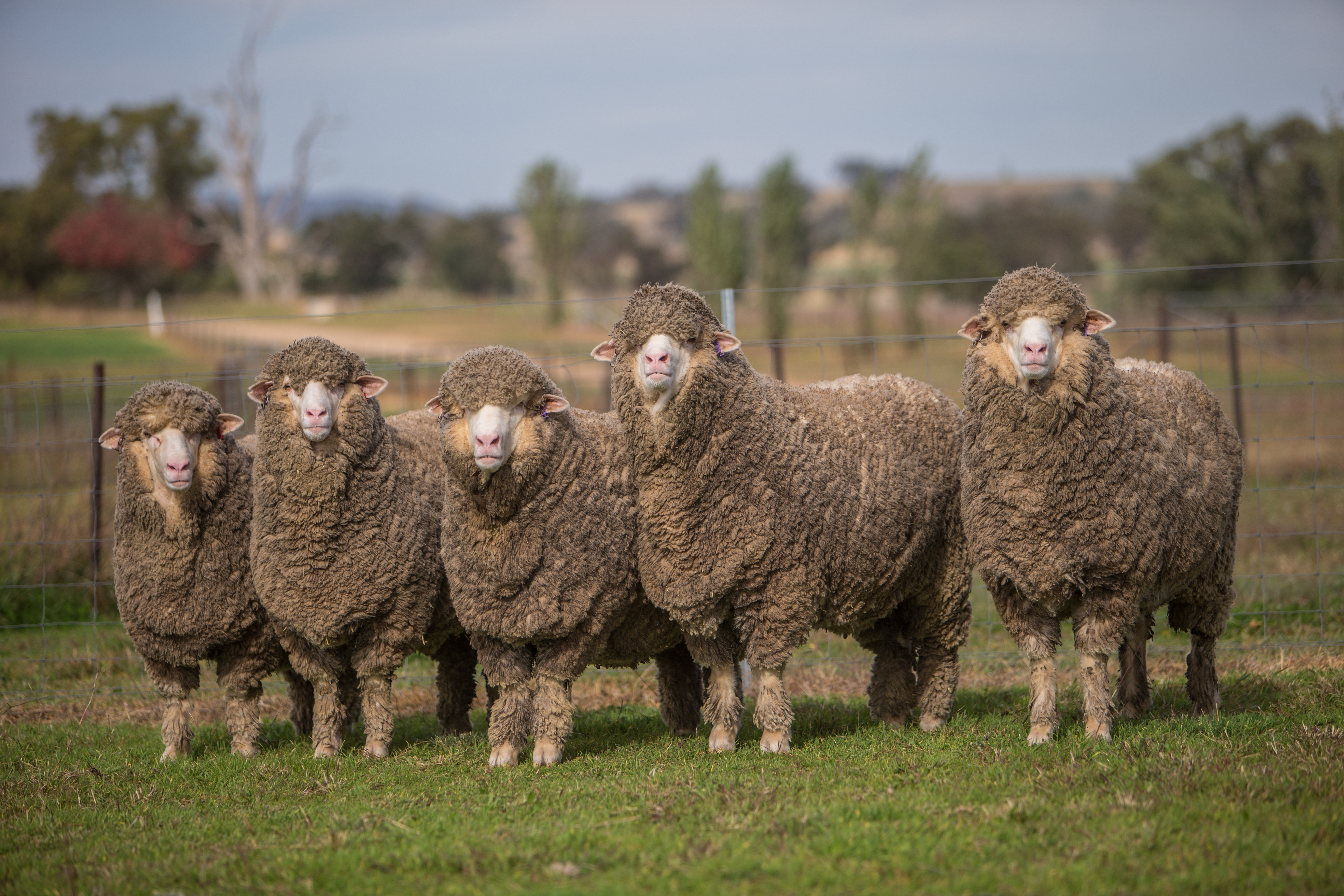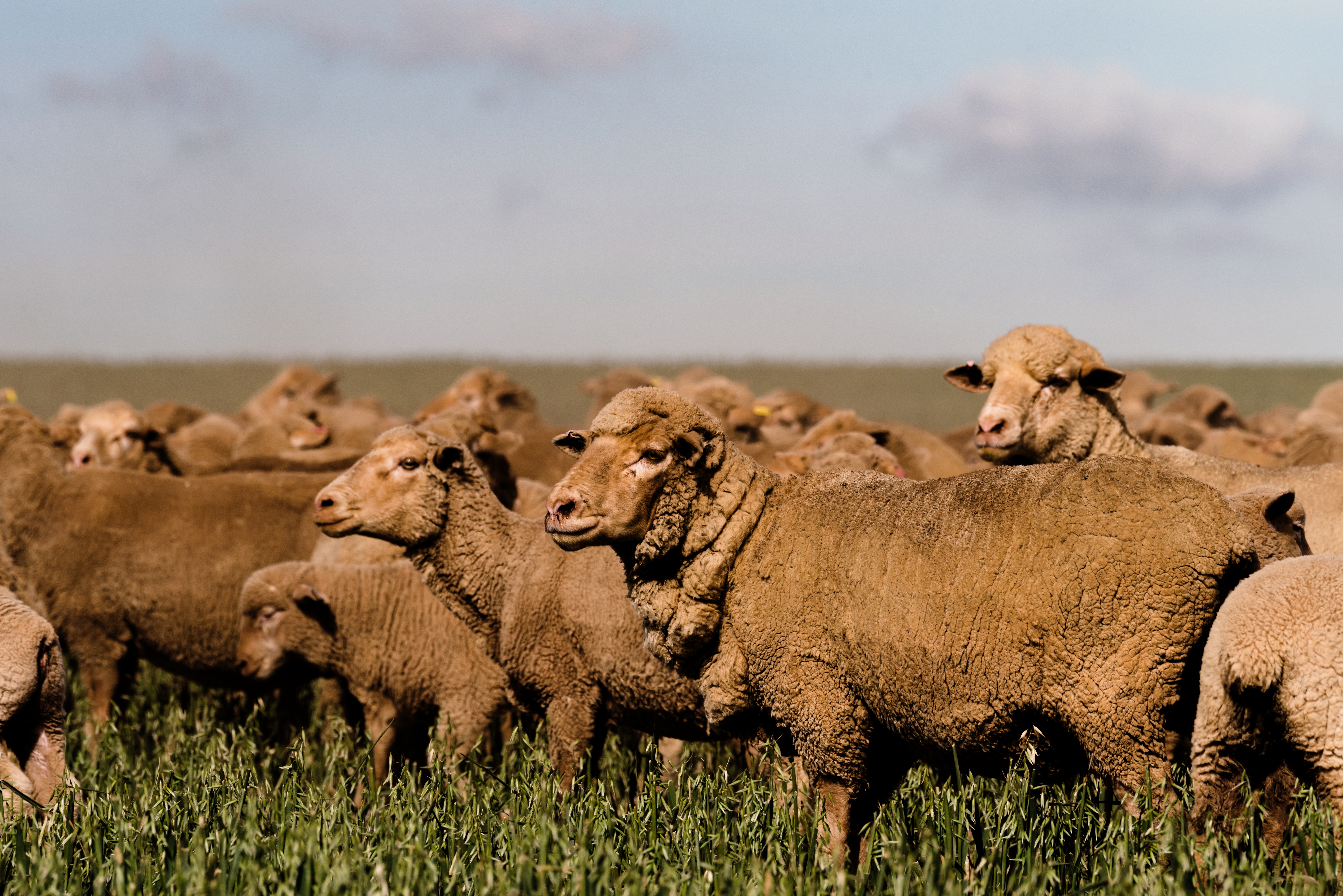Making sense of ASBVs and Selection Indexes

Ram buying is a task that is often only carried out once a year, so it is important that you are making well-informed selection decisions. With this year’s ram selling season now underway, now is a good time to brush up on what you need to think about to get the most out of your selection decisions.
Ram buying is a task that is often only carried out on one or two days a year, but these decisions have long-lasting impacts on the profitability of your flock, so it is important that you are making well-informed selection decisions.
Australian Sheep Breeding Values (ASBVs) are a valuable tool that can be used to achieve genetic progress in your flock. Before you get started with ASBVs, you must have a breeding objective and therefore be clear on which traits you want to improve and their relative importance for your enterprise.
With this year’s ram selling season now underway, now is a good time to brush up on what you need to think about to get the most out of your selection decisions.
The variation that you see between animals is due to a combination of genes and environment
The appearance and performance of an animal, i.e. its phenotype, is an expression of its genetic make-up, i.e. its genotype, combined with environmental factors, such as birth type, dam age and management factors like nutrition. For example, sheep born as twins tend to be lighter and cut less wool than single-born lambs. This is not because twins have poorer genes for growth, but because they competed for nutrition during pregnancy and up to weaning – i.e. their environment was not as good as a single-born lamb. What is important to understand is that an animal does not pass on the environmental or non-genetic effects to its progeny, it only passes on its genes. Hence, a twin-born lamb may have some inferior phenotypic production traits but may be genetically superior to the single-born lamb.
ASBVs are estimated by separating genetics and environment. This allows animals to be compared across flocks based on their package of genes.
Heritability in a nutshell
Heritability is the proportion of the variation between individuals that can be explained by genes. Some traits, such as reproductive traits, have low heritability, meaning that a large proportion of the variation between animals is due to environmental factors rather than genes. Other traits, such as growth and fibre diameter, have much higher heritability and are readily passed onto the progeny.
Genetic correlations
Correlations are the genetic relationships that exist between traits, due to being controlled by the same or close genes. This means that changing one trait also changes the other. Genetic correlations may be positive, meaning that increasing one trait increases the other, or negative, meaning that increasing one trait decreases the other. These correlations may be strong or weak or be considered favourable or unfavourable. Measuring correlated traits is important for traits such as carcase traits or those expressed at a later age.
Genomics
The average animal has half of its genes in common with its parents. However, which genes they are is random. Genomics uses the mapping of DNA to accurately identify common genes and can therefore more accurately identify relationships between animals in Sheep Genetics, enabling ASBVs to be more accurately estimated. Genomics also allow ASBVs to be more accurately estimated for traits that are hard to measure, measured later in life or on carcases, or are sex-limited. Genotypes can also assist with parent verification of animals and be used as a tool for commercial producers to benchmark their animals across the industry.
Australian Sheep Breeding Values (ASBVs)
ASBVs predict the genetic merit of an animal for a particular trait, such as clean fleece weight or growth (i.e. weight). Data collected by ram breeders and research flocks, pedigree and genomic information are used to generate ASBVs. ASBVs account for the environmental effects which contribute to the animal’s phenotype, which allows sheep to be compared based on the genes they will pass on to their progeny. They also account for the heritability of the trait.
ASBVs are reported at different age stages and are displayed as an abbreviation of the age stage and trait name. The value of the ASBVs are deviations from 0, which for most traits represents the average of animals in the database in the 1990 drop. The exceptions are breech wrinkle, breech cover and dag which are based on the average animal in the database in the 2000 drop. For example, a yearling clean fleece weight (YCFW) ASBV of +20% means that the animal will cut 20% more wool than the average animal in the 1990 drop at yearling age.
ASBVs may be positive or negative. Negative breeding values do not necessarily mean the animal performs badly for that trait. For example, with worm egg count (WEC) ASBVs, a lower or negative ASBV means that the animal is predicted to have a lower worm egg count and is more resistant to worms. In other cases, a positive or higher breeding value may be more favourable, such as for growth (weight) ASBVs.
ASBVs are reported with an accuracy. The more information that is submitted on an animal, including its relatives, the greater the accuracy of its breeding value. Traits with higher heritability have higher accuracy because they are easier to predict.
It is important to remember that a ram contributes half of the lamb’s genetics. This means that when you compare two rams, you need to halve their breeding value to compare the predicted performance of their progeny.
Visit this Sheep Genetics factsheet for more information, including an example of how ASBVs are displayed and what each component means.
What’s the difference between ASBVs and FBVs?
Flock Breeding Values (FBVs) describe the genetic performance of an animal for a trait within a flock. Unlike ASBVs, FBVs are not comparable between flocks and are not published with an accuracy. This is because FBVs do not meet the minimum accuracy and linkage standards to be reported as an ASBV.
Selection Indexes
Selection Indexes combine traits relevant to a given production system, and hence breeding objective, into one number. This allows animals to be easily and quickly ranked based on their profitability in that production system, which, for example, can help create a shortlist of rams to inspect on sale day. Selection Indexes consider genetic correlations and can help overcome unfavourable relationships between traits.
Alongside Selection Indexes, it is important to also consider the individual ASBVs which are important to your breeding objective and ensure the structure and type of the animal meets your requirements.
You can find more information on Selection Indexes in the Sheep Genetics factsheet.
Percentile band tables
Sheep Genetics report percentile band tables which enable animals to be benchmarked against the current drop of animals in the database. Animals in the top 10th percentile rank the highest for the trait whilst those in the 90th percentile rank lowest. Some traits may have an optimum ASBV and therefore it may not always be best to be in the highest (i.e. 1%) percentile.
Flock Profile test
A Flock Profile provides commercial Merino producers with a genetic benchmark of how their flock compares to industry. Flock Profiling involves genotyping 20 randomly selected animals from the current drop of progeny. The results provide flock average breeding values which are comparable to the average of the Sheep Genetics MERINOSELECT database. The traits included in a Flock Profile are:
- Yearling clean fleece weight
- Yearling fibre diameter
- Yearling coefficient of variation of fibre diameter
- Yearling curvature
- Yearling staple length
- Post-weaning weight
- Yearling weight
- Yearling fat depth
- Yearling eye muscle depth
- Early breech wrinkle
- Post-weaning worm egg count
The Flock Profile results reflect the genetic merit of your ram team used five to seven years ago. Flock Profiles can be used to track the genetic progress of your flock and to inform your ram buying and selection decisions.
Benchmarking your ram team
You can track the genetic position of your flock by keeping a record of the rams you use each year and averaging their ASBVs. When using a ram team average to work out your current ASBV position, make sure to include all rams used, use their most recent ASBVs and consider the traits that are important to your breeding objective. These ram team averages and the progress over time can be used to inform selection decisions.
Putting ASBVs into practice
Remember to firstly consider:
- What is my breeding objective?
- Which traits are my focus and what is their relative importance?
- Which direction do I want to move these traits and by how much?
Selecting a ram source
RamSelect is a web-based tool developed by the Sheep CRC, in conjunction with NSW DPI and Telstra, which allows you to find and rank rams based on ASBVs that match your breeding objective. Information can also be stored for rams purchased from catalogues listed on RamSelect. This can enable potential new rams to be benchmarked against those previously purchased, as well as to benchmark your ram team against the rest of the industry.
You can access RamSelect at www.ramselect.com.au
Things to consider and ask the stud breeder
- Does the breeding objective of the stud align with yours?
- How do they select rams for use in the stud e.g. visual measurements, objective measurements, ASBVs, Selection Indexes?
- What is the stud’s Data Quality Score? Studs with higher scores, on average, achieve greater rates of genetic gain
- What traits do they record and submit to Sheep Genetics? How often do they submit data to Sheep Genetics? There will be less frequent large shifts in ASBVs or indexes if the stud is submitting data more frequently
- Are they involved in any benchmarking activities?
- What are the stud’s genetic trends over the past 10 years?
Ram selection
Before a ram sale, you may like to use the Selection Index relevant to your production system to rank the rams and shortlist which rams you will inspect on sale day. Remember to also ensure that you examine the ASBVs of these rams and check that they align with your breeding objective.
Search for the animal on the Sheep Genetics website and check:
- The depth of pedigree of the animal. More information on the relationships between animals can be gathered when multiple generations of known pedigree have been supplied to Sheep Genetics
- The ‘traits observed’ section to see what measurements have been collected on the animal
- If there is a genotype flag for the animal. Remember that genomics increase the accuracy of ASBVs and indexes
- If the animal has progeny recorded and how many flocks they have progeny in. The more progeny recorded, the greater the accuracy of the ASBVs and indexes
Things to check when examining pen cards and sale catalogues
- Have ASBVs, FBVs or raw data been presented? Remember that FBVs can only be used to compare animals withina flock
- What is the accuracy of the ASBVs?
- What percentile band does the animal sit in for the trait? Normally ASBVs are highlighted where animals sit in the top 5%, 10% or 20% for that trait out of the drop of animals in the database
- Is the analysis date for the ASBVs within the last 2 months?
The big picture
Remember, genetic gain requires time, dedication and patience but is cumulative. The rate of genetic gain is typically about 1-2% per year although it depends on several factors, including your starting point relative to your goal. It is important that you have a plan and stick to it. An individual ram contributes many more lambs to the flock over his lifetime than one ewe and hence he has a much greater impact on the long-term genetic profile of the flock. Furthermore, a ram’s genetic influence within a typical self-replacing flock lasts much longer than the four joinings for which he will normally be used. This is because:
- Breeding ewes with 50% of a sire’s genes (daughters of the sire) are likely to be still breeding 10 years after the ram was first used
- Breeding ewes with 25% of a sire’s genes (granddaughters of the sire) are still in the system up to 16 years after the ram is first used
This is why it’s so important to make strategic and informed breeding decisions and ensure you’re choosing sheep that are fit for purpose – your classing, selection and joining decisions have a tangible, long-term impact.
Where to go for more:
Amy Lockwood, AWI Extension WA








.png/Zz0yM2JiZjM5ODBlYmMxMWYwOTU5YTYyNTc0YTA0ZjBjZQ==)